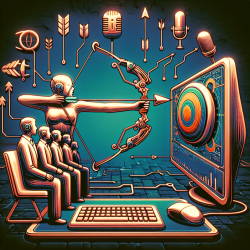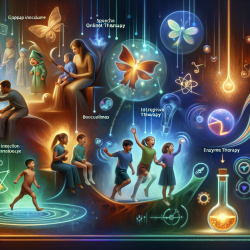Speech therapy has long been a crucial intervention for individuals with communication disorders, particularly those facing challenges with articulation. Traditional methods, while effective, often require innovative approaches to cater to the diverse needs of patients. The advent of computer-based speech training (CBST) programs has opened new avenues for speech therapists, offering tools that can make learning more engaging and potentially more effective. A prime example of such innovation is the "Bow and Arrow Game," a computer-based program designed to train stop consonant productions, as detailed in the research article Development and Preliminary Testing of a Computer-based Program for Training Stop Consonants.
The significance of addressing consonant imprecision cannot be overstated, as it plays a major role in reducing speech intelligibility. The "Bow and Arrow Game" is developed to provide both visual and auditory feedback on the manner and place of articulation, enhancing the traditional speech therapy experience. This game demonstrates a high level of accuracy in recognizing the /p/ phoneme from /t/ and /k/ sounds, which is a promising development in the field of speech pathology.
As practitioners, it is imperative to stay abreast of these technological advancements and consider integrating them into our therapy sessions. The benefits of incorporating tools like the "Bow and Arrow Game" into our practice include:
- Increased Engagement: The gamification of speech therapy exercises can significantly boost motivation and engagement among patients, especially children, making the learning process more enjoyable and less daunting.
- Immediate Feedback: Providing instant visual and auditory feedback helps patients understand their articulation errors in real-time, enabling them to make adjustments more quickly than traditional methods might allow.
- Customization: Computer-based programs often allow for customization to meet the individual needs of each patient, which is crucial for addressing specific articulatory challenges effectively.
- Data Tracking: These programs can track progress over time, providing valuable data that can inform therapy decisions and adjustments as needed.
However, the implementation of such technology is not without challenges. Accessibility, cost, and the need for training to effectively use these tools are considerations that must be addressed. Moreover, the reliance on technology should not replace the essential human element of therapy but rather serve as a complementary tool.
Further research is needed to fully understand the impact of CBST programs on speech therapy outcomes. While the preliminary testing of the "Bow and Arrow Game" shows promising results, ongoing studies will be crucial in determining its effectiveness across a broader range of speech disorders and among different age groups.
In conclusion, the integration of technology in speech therapy, exemplified by the "Bow and Arrow Game," represents a significant step forward in our ongoing efforts to improve articulation and speech intelligibility for those with communication disorders. By embracing these innovations, we can enhance our therapy practices, making speech therapy more effective, engaging, and personalized.
For speech therapists and practitioners interested in exploring the potential of CBST programs, the "Bow and Arrow Game" serves as an inspiring example of how technology can be leveraged to advance our field. To read the original research paper and gain deeper insights into this innovative approach, please follow this link: Development and Preliminary Testing of a Computer-based Program for Training Stop Consonants.










